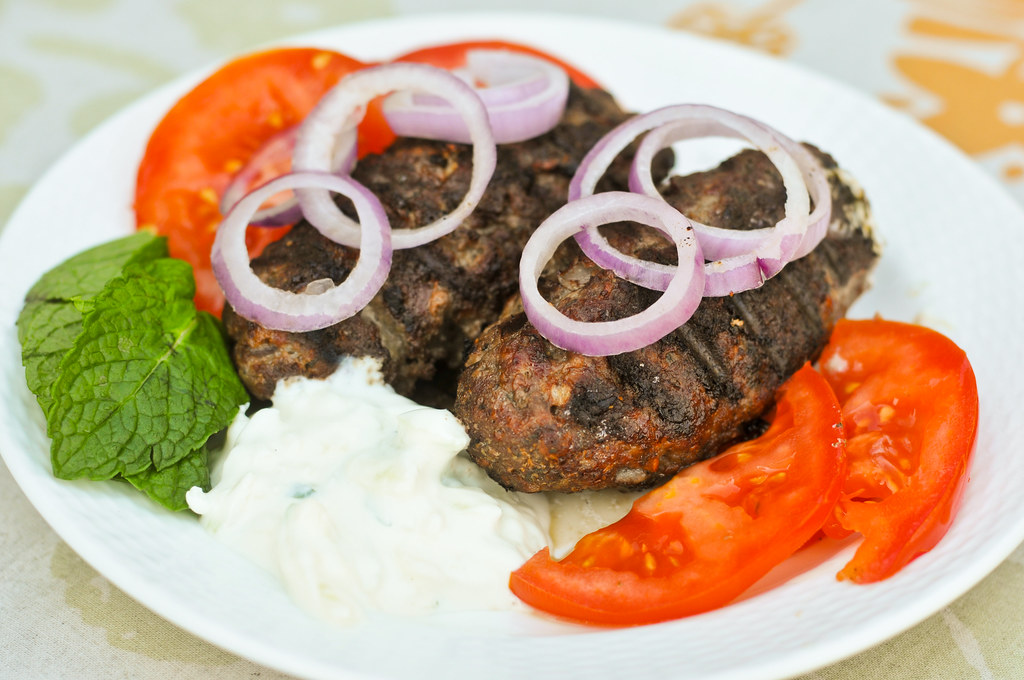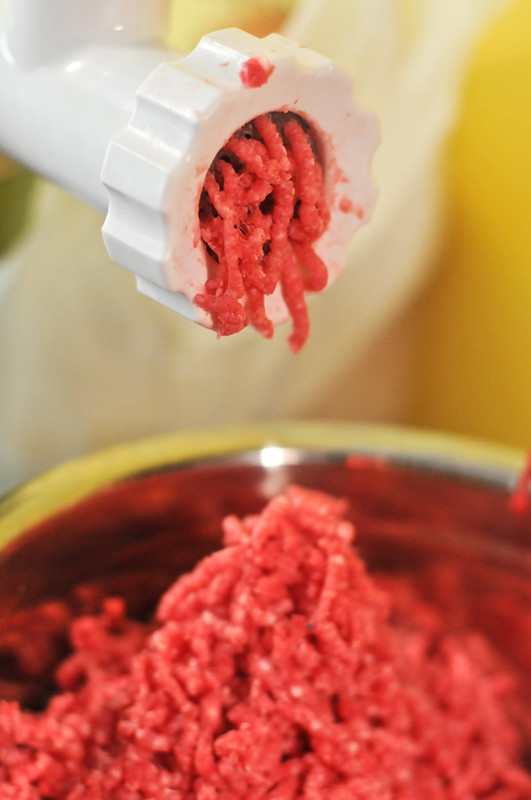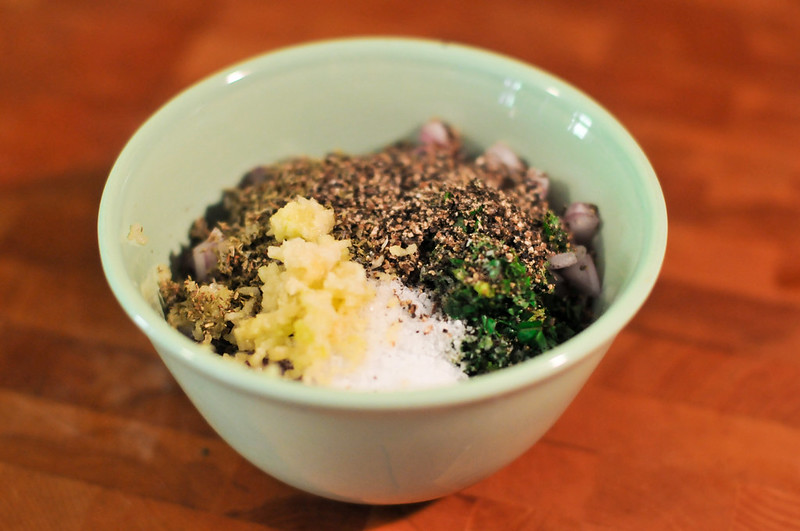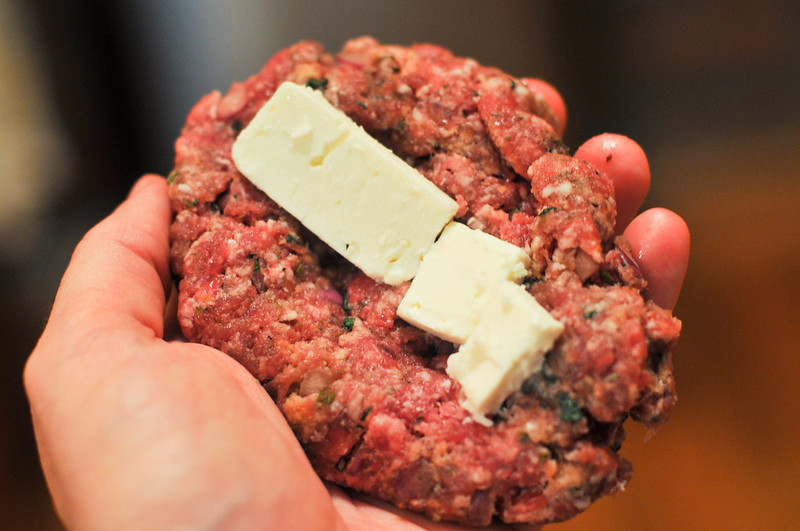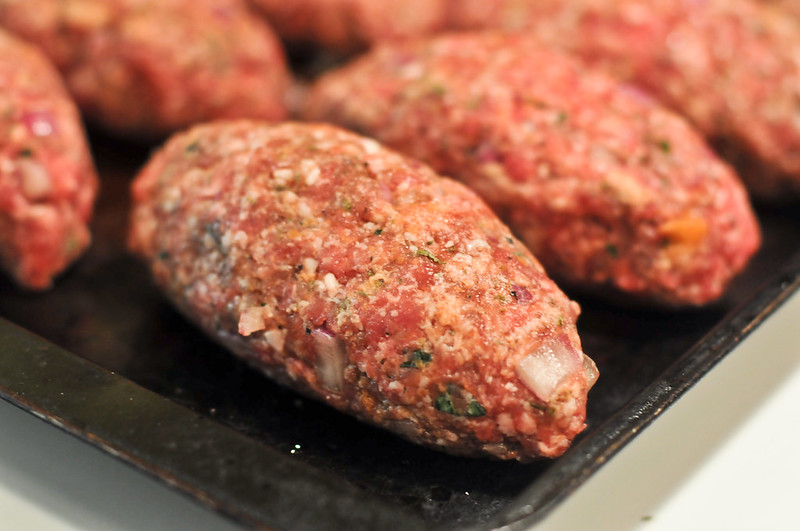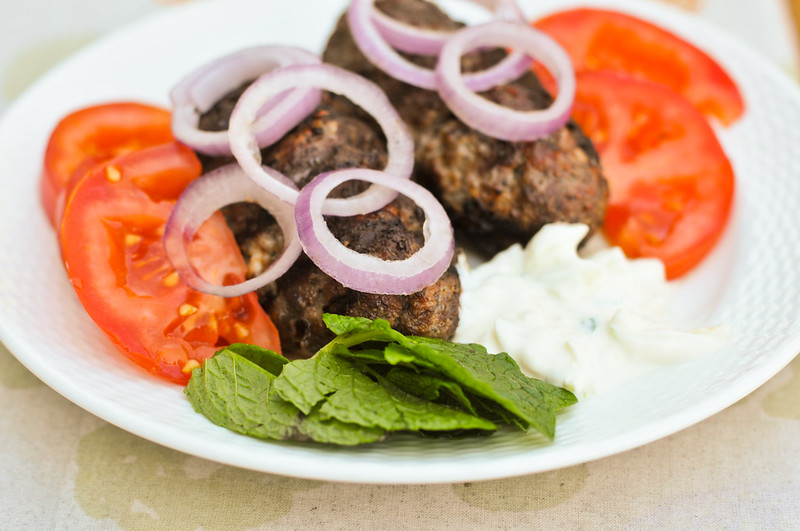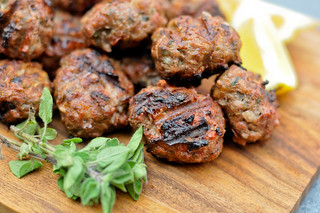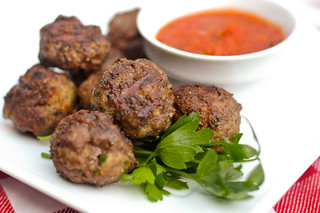Bifteki
I really love getting comments/notes/emails from you all with kind words about this here blog—I can check analytics all I want, but there's nothing like hearing from someone who actually tried and liked a recipe. Last month I got one of these such notes from a fan on Facebook, who newly discovered the Meatwave and promptly went for the keftedes. So this one is for Laura, because if you liked those Greek meatballs, you bound to love this bifteki—basically large keftedes with the added bonus of being stuffed with feta.
What does any good meat patty start with? Fatty meat! Doesn't matter if it's burgers or meatballs or this bifteki, I like to start with ground chuck. As well documented previously, chuck fulfills on two requirements for me: a great beefy flavor and a ratio of fat-to-meat around 20%, which will keep the meat moist over the hot heat of the grill and add flavor. Of course, I always advocate for grinding at home, but at least get the meat freshly ground from a decent butcher.
Having done a fair amount of Greek cooking—it's hard not to when living in Astoria, aka. Greek capital of the USA—the seasoning mixture has become second nature. Whether it be gyro, souvlaki, or keftedes, it's pretty much a given there's going to be onion, garlic, and oregano. This bifteki got a little more herbs with the addition of mint, thyme, and parsley, but the end result is pretty much the same.
My only real problem with the keftedes were the meatball ended up being a little too soft for the grill. To combat that here, I skipped soaking the bread in milk and went for straight up breadcrumbs. This was a good solution, giving a nice, firm meat that was easily shaped and held up on the grill.
Now for the defining characteristic of the bifteki—stuffing it with cheese! Most Greek places in the neighborhood have befteki, but merely call it a "burger," which created a pleasant surprise with its cheese filled center the first few times I ever ordered it. I've seen different cheeses used, but I think when going Greek, Feta makes an excellent choice. While it softens over the heat, it doesn't really melt, staying in tact to give a salty, creamy center that doesn't ooze out while eating.
All the beef was formed around sticks of feta and then grilled. While I often go for fully cooked on meatballs, I kept the keftedes slightly undercooked, at a rosy medium/medium-well, which was reached just as the meat was well seared on all sides.
After trying the bifteki, I'd say skip the keftedes and go straight to this. You get everything the meatballs are—juicy and beefy with a herb assortment that makes them uniquely Greek—but so much more with addition of Feta. The added creamy and saltiness goes a long way in heightening the flavor and texture of the whole thing. You could put this on a bun and eat "burger" style, but I like the platter version with tomato, red onion, and tzatziki accompaniments, which round out the meal very nicely.
You Might Also Like
Comments
-
Debbie Cummings I didn't know what Befteki was for a long time. I looked it up online and that is how I got to this page. I am going to make this concoction of ground beef. It looks easy and fun too. I will let you know how it turns out.
Sincerely,
Debbie C. -
sh The photos and recipe looks straight out of seriouseats. Don't see any reference or credit to seriouseats.
https://www.seriouseats.com/recipes/2010/10/grilling-bifteki-greek-meatballs.html -
Josh @SH That's correct, I'm the author of both and this recipe was originally developed for Serious Eats. My contract with SE gave them exclusivity for a few months, then I could use my content for my own personal use, so much of my SE work also shows up on The Meatwave.
-
Nicole Mine were very delicious but fell apart. Should I use 2 eggs next time instead of 1? O should I rather add more bread?
